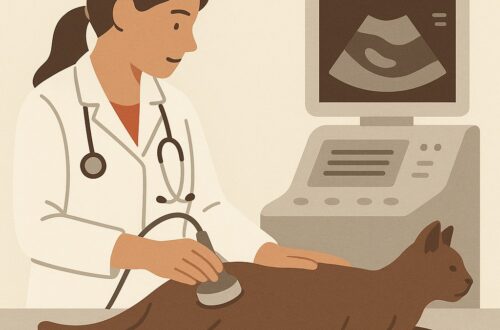Working in an emergency room for almost two decades, I’ve definitely seen my fair share of patients who’ve ingested some weird things – rocks, plastic, feminine hygiene products, hair ties, etc. Sure, dogs and cats love to chew on things, but actually ingesting them is problematic. This unusual habit of consuming objects is called pica. This week I’ve dedicated some time to explore this topic in greater detail. Happy reading!

Pica – What is it?
Pica is simply defined as the ingestion of objects with no nutritional value that confer no benefit to the animal. I think we can all agree a cat ingesting a hair tie or a dog eating a tampon has no nutritional benefit for either of them. Yet, such consumption happens. In fact, it happens all the time. As a board-certified veterinary emergency and critical care specialist, I get to deal with the aftermath of such unusual eating habits – intoxications, acute pancreatitis, and gastrointestinal obstructions.

Pica – What causes it?
As some of the sequelae of pica can be life-threatening, I feel strongly it’s essential veterinarians determine the reason why some of our pets choose to eat unusual objects that have no nutritional value. There are a myriad reasons, including:
- Nutritional Deficiencies – There is some evidence pica is associated with underlying medical conditions, including mineral deficiencies. For this reason, veterinarians will recommend evaluating non-invasive blood and urine tests to screen for abnormalities
- Boredom – When our pets don’t receive adequate enrichment – physical and mental stimulation – they may choose to consume dangerous and non-nutritious objects.
- Compulsion – Just as with some humans, compulsive disorders do occur in our pets. Their compulsion may manifest as ingestion of inappropriate objects. Evidence suggests a genetic link in some animals. For example, Siamese and Burmese cats are over-represented for suckling and eating various fabrics, particularly wool.
- Teething – Puppies and kittens, like infants, like to chew on things when they’re teething. If we don’t provide an appropriate substrate on which our pets can chew, they’ll find their own items, a fact that may not be associated with the safest outcomes.
- Anxiety – Pets live with anxiety too. As a coping mechanism, they may redirect their anxiety to other inappropriate behaviors, including eating dangerous objects.
- Early Weaning – Suckling on inanimate objects is occasionally observed in kittens that have been weaned too early.

Pica – How is it treated?
Adequately treating pica requires determining the underlying cause of the inappropriate behavior in the first place. If a medical problem is documented, appropriate therapy is essential for curbing pica.
Ensuring a pet with pica gets adequate mental and physical stimulation is often helpful. Such activity all contributes to environmental enrichment. Provide appropriate toys. Spending at least 30 minutes per day petting, playing, and interacting with your pet. Redirecting inappropriate behavior to a more acceptable outlet and/or to an energy expending activity can be hugely helpful in curbing pica.

For patients with anxiety, determining the source of an animal’s stress is of paramount importance…and often easier said than done. Of course, something as simple as using a basket muzzle when a pet isn’t directly supervised can be effective. Other techniques for treating pica include counter-conditioning and the use of medication. Pet parents will likely find it helpful to partner with a board-certified veterinary behavior specialist to help determine the cause of their pet’s pica.
The take-away message about pica in dogs and cats…
Pica is the inappropriate consumption of items without nutritional value. As such ingestion can be dangerous, so determining the cause and curbing the behavior is essential. Pet parents should work closely with the family veterinarian and board-certified veterinary behavior specialists to develop a logical approach to successfully resolve this health issue.
To find a board-certified veterinary behavior specialist, please visit the American College of Veterinary Behaviorists.
Wishing you wet-nosed kisses,
CriticalCareDVM





